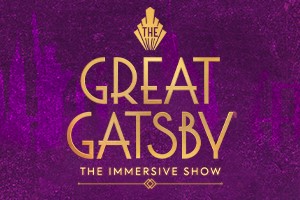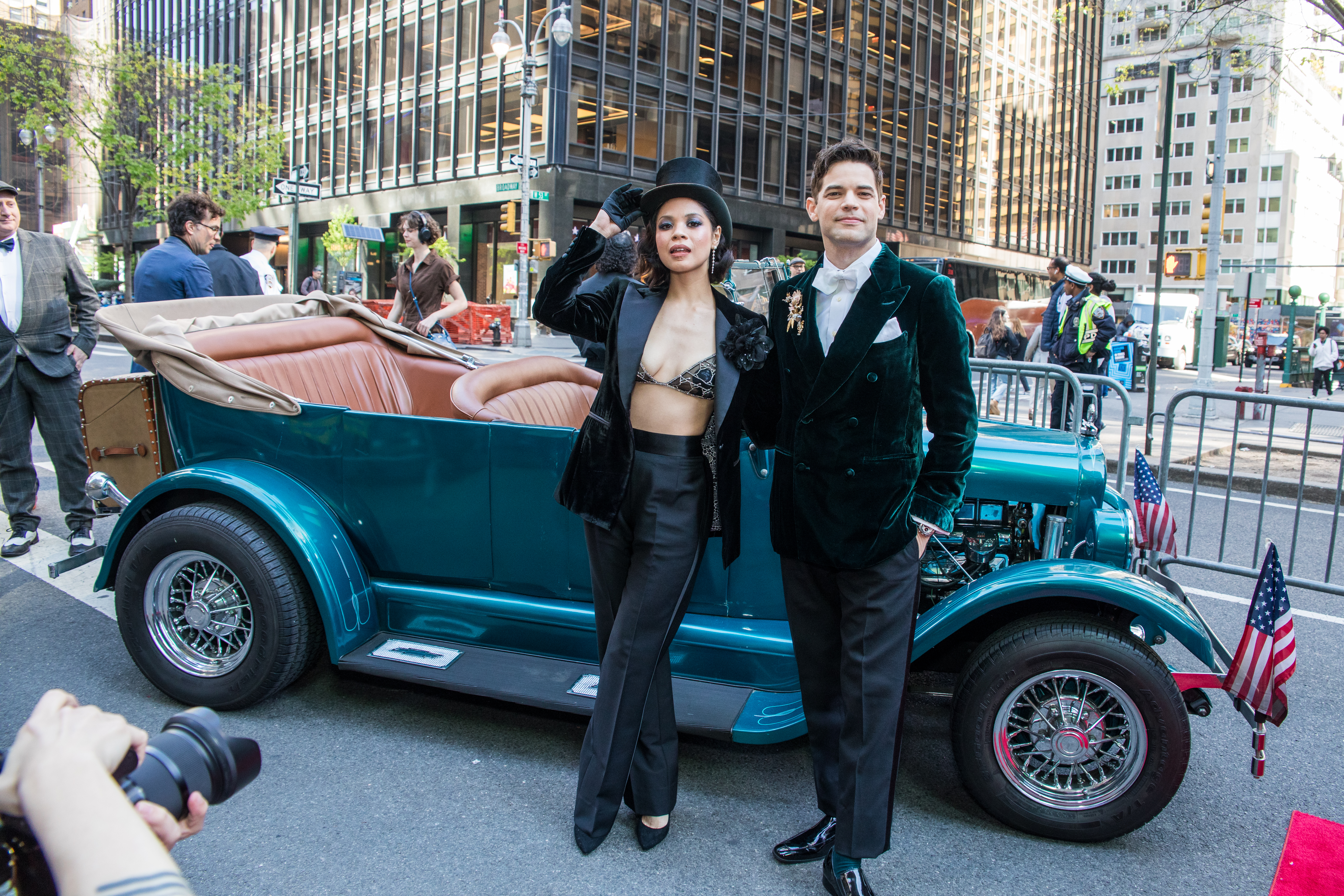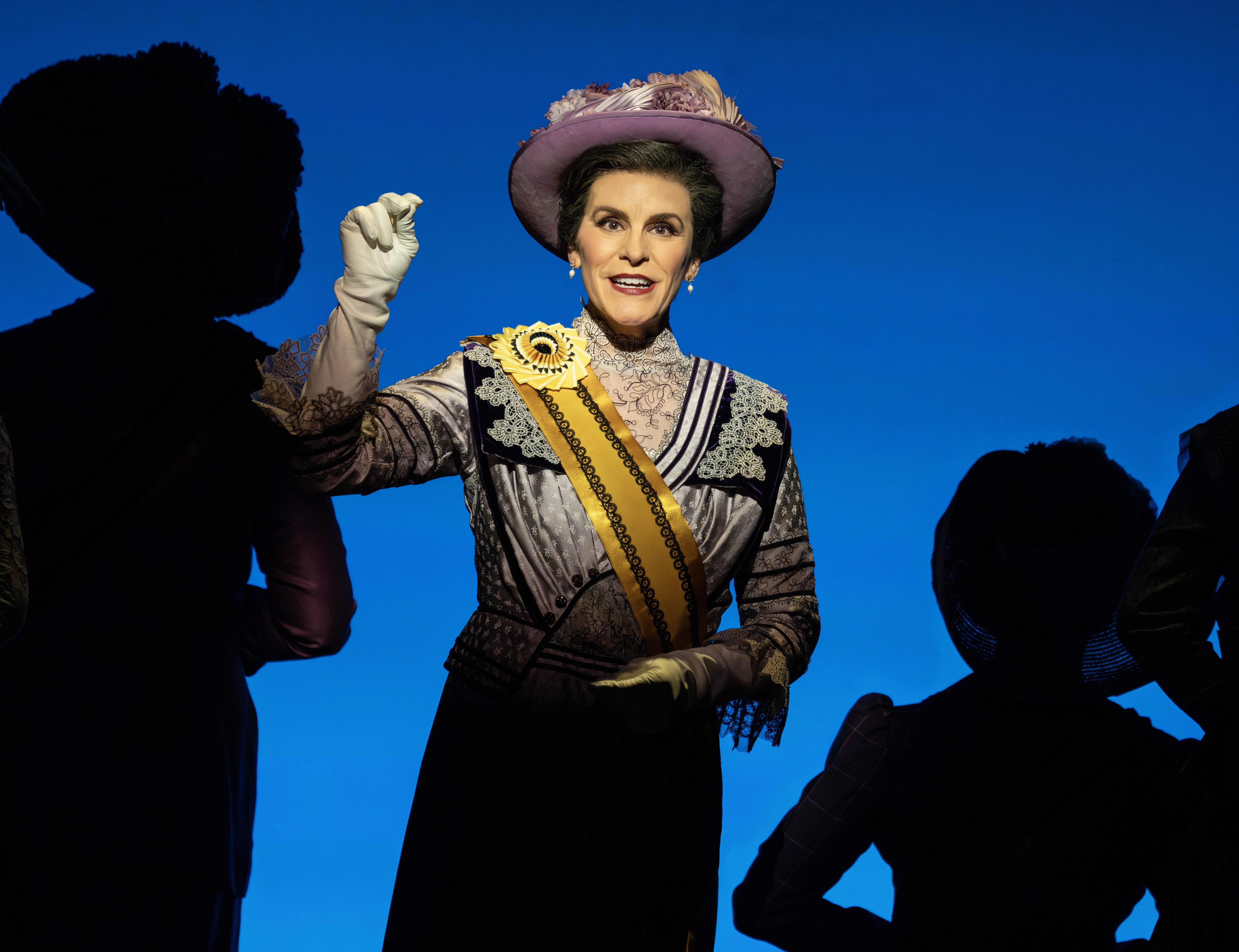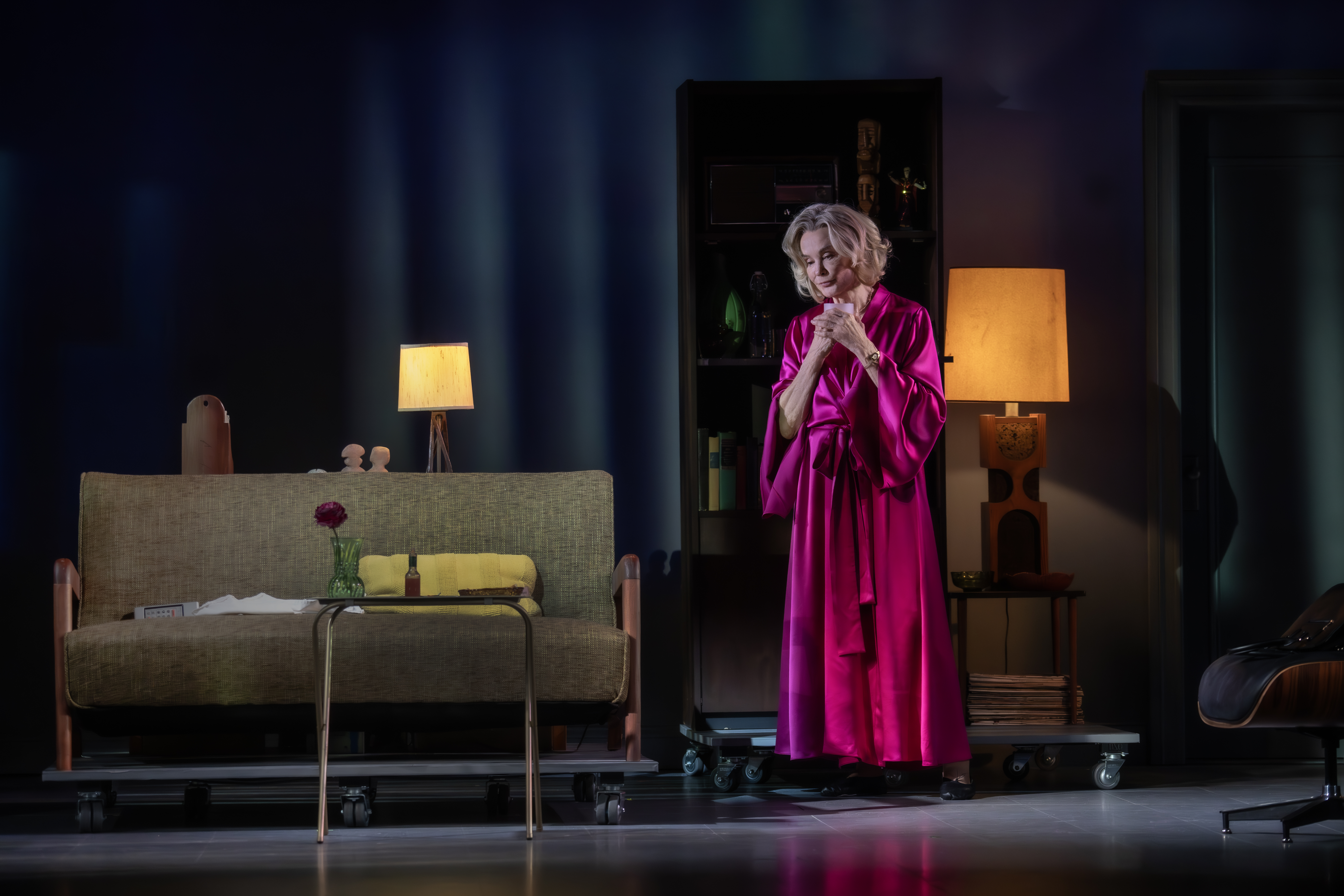Review: The Great Gatsby Is a Trip Back to the Roaring ’20s
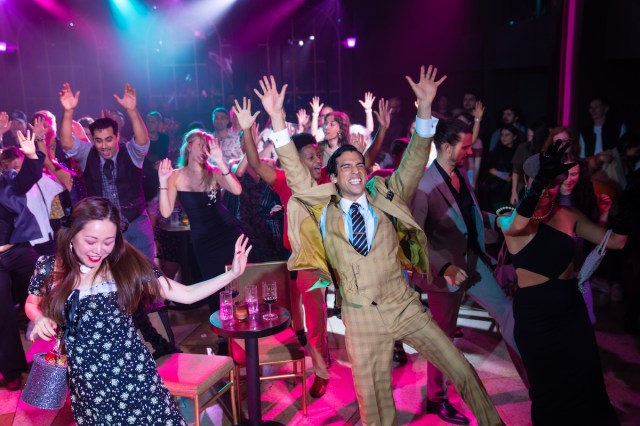
(© Joan Marcus)
You’re not likely to have a heart-to-heart conversation with Jay Gatsby at the immersive adaptation of F. Scott Fitzgerald’s The Great Gatsby. At least, I didn’t. But that puts me in good company: Most of the guests at the fabled tycoon’s palatial West Egg home are uninvited, and only those who seem to possess important information about the elusive Daisy are ever summoned to a private audience. That relegates the rest of us to the role of well-lubricated voyeurs, enjoying Gatsby’s booze while witnessing the near-achievement (and dramatic implosion) of his American dream.
A perennial source of inspiration for theatermakers, this Gatsby is adapted and directed by Alexander Wright, who has since 2015 mounted the show in multiple venues in the UK. Under the banner of Immersive Everywhere it has finally come home to New York City’s Park Central Hotel, where it performs in a specially retrofitted ballroom that drips with faded Jazz Age glamour (the resident director is Tara Ocon). The ballroom is surrounded by labyrinthine hallways leading to smaller, darker spaces where the myth and mystery of Gatsby has the potential to flourish like evening primrose (the excellently detailed set design is by Casey Jay Andrews, with props and set decoration by Faye Armon-Troncoso).
Sadly, that potential is never fully realized in an adaptation that is faithful to a fault to Fitzgerald’s text. Instead of rumors of bootlegging and Hohenzollern ancestry whispered over martini glasses, we mostly learn about Gatsby from Nick Carraway (the affable Rob Brinkmann, devotedly leaping into the role of narrator). He opens the play by excitedly dashing around the ballroom, reciting a monologue composed of sections drawn from the very beginning (and very end) of the novel. When Nick isn’t narrating, the other performers act out scenes from the book, often in that very same ballroom.
“Look here, old sport,” Gatsby (Joél Acosta) declaims across the room, “what’s your opinion of me, anyhow?” Nick, who evades the question in the novel when the two characters are alone in Gatsby’s automobile, certainly doesn’t answer here, surrounded by gawkers. It renders ridiculous Jordan Baker’s observation that large parties provide a level of privacy. This is Gatsby for the era of Real Housewives, when the goal is very much to make a public scene.
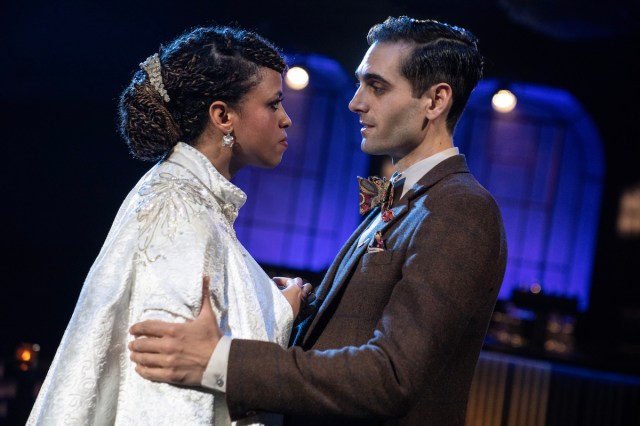
(© Joan Marcus)
The fundamental challenge of immersive theater is conveying the basic story to the entire audience while offering them freedom of movement, and some actors are better at operating within this contradiction than others: Stephanie Rocio plays Baker with a gossipy, approachable style that allows the story to spill out organically. I watched as she recounted the tale of how Daisy (Jillian Anne Abaya) wed the hot-headed Tom Buchanan (Shahzeb Hussain), conscripting audience members and their jewelry for dramatic effect.
In a smaller drawing room, I listened as Nick and Tom reminisced about their time at Yale. When the pint-size Tom claimed to have been 240 pounds, I involuntarily guffawed, earning me a reproachful glare from Hussain and instantly dousing me the special brand of delusion enjoyed by this tiny trust-funder. It is a brilliant casting choice.
There are others: I was particularly struck by the performances of Claire Saunders and Keivon Akbari as Myrtle and George Wilson, Tom’s mistress and cuckold, who are here transformed into tavernkeepers of the very bar around which we are gathered. Saunders is both pitiable and erratic as Myrtle, while George’s desperation seems to seep out of Akbari’s pores. He so wants to escape the valley of ashes: “I can’t peddle alone,” he imploringly tells Myrtle, who scorns his sincerity in this most devastating scene of the whole play.

(© Joan Marcus)
Unfortunately, the central couple are somewhat less tangible: Acosta arms Gatsby with a runway model strut and insincere grin, as if he is prepared to sell us something we have no business buying. Daisy, an inscrutable figure in the novel, is even more demure as performed by Abaya. Perhaps we mortals can never touch their mythic love, but it would be nice to brush up against it.
While Wright’s adaptation leaves us somewhat disappointed, the production values do not. Vanessa Leuck’s costumes offer an explosion of colors, beads, and sequins, with particular care put into the choice of jewelry for both men and women. Jeff Croiter has lit the entire space in moody, sexy incandescence, which transforms instantly for vibrant dance numbers (lively choreography by Holly Beasley-Garrigan). Peter Fitzgerald’s sound design is flawless throughout the Gatsby maze, so that we never miss a beat or a word of dialogue — something that confounds many designers working within the confines of a proscenium stage.
As we hesitantly meow through 2023, The Great Gatsby at least offers us a great escape to the roaring ’20s, a giddier time for America, awash in gin and naivete. Drink it up.



